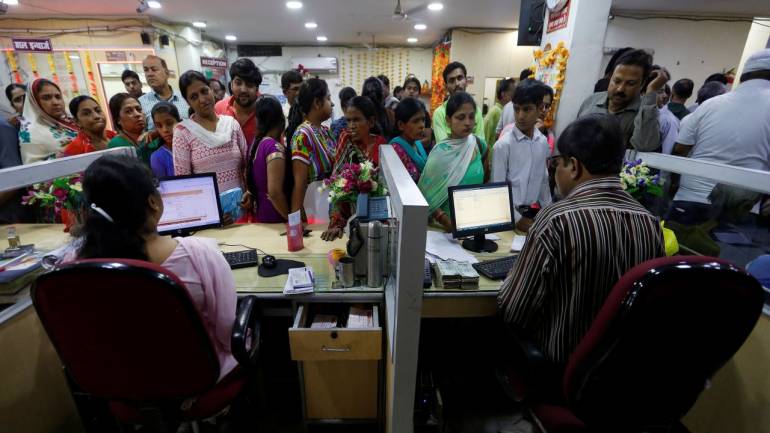
Bigger banks have shown good improvement in asset quality in the quarter ended December 2018. After a couple of years of concerns, Q3 performance has given confidence to analysts to project a strong turnaround in FY20 earnings.
Global research house Morgan Stanley views 2019 as the year of big banks given moderating credit costs with pre-provision operating profit (PPoP) acceleration and pickup in deposit market share.
The research house highlighted a continuing improvement in asset quality, with bad loans ratio moving lower to around 10 percent of loans against around 12 percent in FY18 and coverage improving to more than 50 percent versus around 45 percent. This should drive moderation in credit costs to 90-125bps in FY20, it said in a report.
It further said liquidity position of banks is also strong, with liquidity coverage ratio at around 120-140 percent. An increased focus on retail term deposits is driving deposit growth acceleration with large private banks’ incremental deposit market share at over 30 percent in FY18-19.
Three of the largest lenders, ICICI Bank, Axis Bank and SBI, have reported sharp acceleration in PPoP growth – 12 percent YoY in Q3 versus 2 percent in FY18, mainly led by higher margins.
Morgan Stanley believes PPoP growth is sustainable because loan spreads adjusted for this have also improved sharply (+25bp QoQ for private banks).
Brokerage calls: UBS bullish on most pvt banks; HSBC advises buy ONGC, Oil India
Coupled with pickup in loan growth and cost efficiency, the research house expects more than 20 percent PPoP growth.
“Moreover, loan yields should improve further, reflecting a) full impact of MCLR hikes, b) moderation in NPLs, and c) improving loan spreads and also loan mix towards higher-margin segments,” it added.
The liquidity concerns raised after IL&FS issue hit non-banking finance companies as well as banks due to exposure to IL&FS group. However, Morgan Stanley feels large banks are relatively less exposed to IL&FS, telecoms, NBFCs, and real estate.
“In a weak scenario of significant increase in stress in the above sectors, we estimate around 200-400bps rise in credit costs. Large banks face relatively lower impact, particularly ICICI Bank, followed by Axis Bank among corporate lenders,” Morgan Stanley said in a report, adding the most affected are Yes Bank and state-owned banks but SBI is better placed in that group.
Considering above factors, Morgan Stanley preferes big corporate lenders. ICICI Bank, Axis Bank, SBI and HDFC Bank are its best pick among retail banks. Its FY20 and FY21 estimates remain above consensus for these banks.
On Yes Bank, the brokerage is still underweight given low capital, low liquidity coverage ratio, high exposure to stressed sectors and weakening PPoP.
In case of SBI, Morgan Stanley expects 43 percent upside in stock at Rs 375 while in bull and bear case scenario, its target price would be Rs 545 and 205, respectively.
“We apply probability weights of 75 percent to base case and 20 percent to bear case to reflect risks pertaining from SBI stepping forward to bail out funding-constrained NBFCs and/or state-owned banks. We still attach just a slight probability (5 percent) to bull case value, reflecting the low probability of a strong economic recovery. Our probability weights remain unchanged,” it said.
Disclaimer: The above report is compiled from information available on public platforms. Moneycontrol advises users to check with certified experts before taking any investment decisions.
[“source=moneycontrol”]

